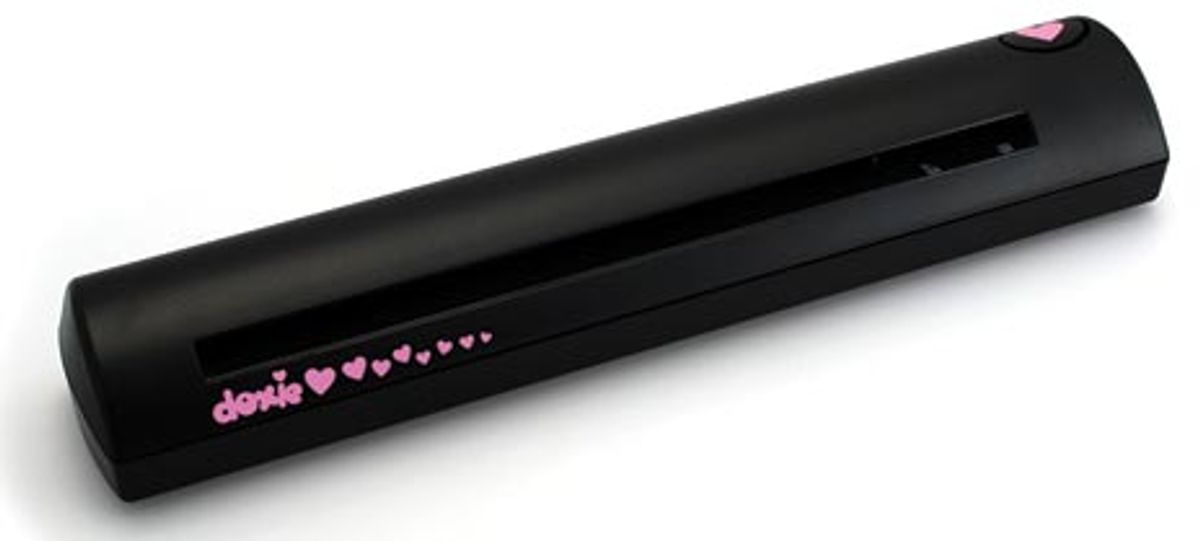I love the idea of a portable scanner. I picture myself quickly scanning receipts, business cards, and clippings when traveling instead of shoving them, crumpled, into a suitcase pocket.
So I was sure I was going to love at least one of these three portable scanners, which came out this year: the US $299 DocuPen X05 from PlanOn, the $129 Doxie from Apparent, or the $269 MobileOffice AD450 from Plustek. All scan in color and black and white, at resolutions of up to 600 dots per inch.
The MobileOffice and I didn't get past "hello." For one, it's a PC-only device, and I'm a Macintosh gal; this match was not meant to be. But frankly, even if it had worked brilliantly, at 10 by 29 by 7.5 centimeters and 1300 grams it's a little too big for my computer bag (or even my crowded desk).
The DocuPen sits at the other end of the size scale. It's just 22.6 by 1.5 by 2.0 cm and 50 grams, sleek and futuristic, designed to inspire gadget lust. I could immediately see a future with this sweet gizmo. I'd pull it out of my purse for a quick scan and conversation would stop—it's that cool. It could even come with me when my computer stayed home; it scans on its own and stores documents for you to download later.
Unfortunately, to make the DocuPen Mac-compatible, I needed a little something extra—a microSD card of 2 gigabytes or less. That size isn't easy to track down these days. Then I had to call customer service to find out where to insert it.
I scanned the first thing I could reach—a FedEx shipping label. It worked pretty well, creating a legible document. And the process was indeed magical—turn it on, roll it gently over the document, stop, and the device stores the scan. Plug it into the computer, and drag the document over to the desktop. Done.
Unfortunately, this love affair was short-lived—I could never repeat that first, magical experience. All my subsequent attempts to scan were frustrating—either I went too fast, earning a warning flashed on the tiny screen, or too slow. Often, I didn't move from "on" to "scan" quickly enough, and the DocuPen automatically powered off. At one point it choked entirely, going into an automatic "save" halfway through my attempt to scan a magazine page; as I could find no way to reset, I simply had to wait for the battery to run down (because battery life isn't great, it didn't take long). Photos were a disaster. Sadly, I set the DocuPen aside; I wanted the relationship to work, but we clearly weren't even going to get to the second date.
Already disappointed by DocuPen and frankly put off by the toylike appearance of Doxie, my third and final suitor—its styling leans heavily on pink and hearts—my expectations were low. I was pleasantly surprised.
How to use the Doxie is obvious. It has just one button (identified, of course, with a heart) to scan; you select resolution and color or black and white on the screen of whatever computer you've attached it to. It saves documents to the computer or to cloud accounts like Google Docs or Flickr. I tested that FedEx receipt—perfect. It also did well with business cards, smaller receipts, and standard printed documents; it had a little more trouble with a portrait on thick photo paper and a thin page ripped from a magazine—both resulted in slightly stretched images.
For most purposes, Doxie works just fine. And at 29 by 5 by 4 cm and 309 grams, it's easily slipped into my laptop bag.
So while Doxie and I may not be entering a long-term relationship, it's been the perfect summer romance.


